William Henry Gates III (born October 28, 1955) is an American entrepreneur, philanthropist and chairman of Microsoft, the software company he founded with Paul Allen. During his career at Microsoft he has held the positions of CEO and chief software architect, and he remains the largest individual shareholder with more than 8% of the common stock.[3] The annual Forbes magazine's list of The World's Billionaires has ranked Gates as the richest person in the world since 1995, with recent estimates putting his net worth near $56 billion.[2] When family wealth is considered, his family ranks second behind the Walton family, heirs of Wal-Mart founder Sam Walton. In July 2007, the Mexican online financial publication Sentido Común reported that the increase in value Mexican billionaire Carlos Slim's holdings of stock caused him to surpass Bill Gates as the world's richest man.[4][5]
Gates is one of the best-known entrepreneurs of the personal computer revolution. Although he is widely admired,[6][7][8] his business tactics have been criticized as anti-competitive and in some instances ruled as such in court.[9][10] Since amassing his fortune, Gates has pursued a number of philanthropic endeavors, donating large amounts of money to various charitable organizations and scientific research programs through the Bill & Melinda Gates Foundation, established in 2000.
| |
Early life

William Henry Gates III was born in Seattle, Washington to William H. Gates, Jr. (now Sr.) and Mary Maxwell Gates. His family was wealthy; his father was a prominent lawyer, his mother served on the board of directors for First Interstate Bank and the United Way, and her father, J. W. Maxwell, was a national bank president. Gates has one older sister, Kristi (Kristianne), and one younger sister, Libby. He was the fourth of his name in his family, but was known as William Gates III or "Trey" because his father had dropped his own "III" suffix.[11] Several writers claim that Maxwell set up a million-dollar trust fund for Gates.[12] A 1993 biographer who interviewed both Gates and his parents (among other sources) found no evidence of this and dismissed it as one of the "fictions" surrounding Gates's fortune.[11] Gates denied the trust fund story in a 1994 interview[13] and indirectly in his 1995 book The Road Ahead.[14]
Gates excelled in elementary school, particularly in mathematics and the sciences. At thirteen he enrolled in the Lakeside School, Seattle's most exclusive preparatory school. When he was in the eighth grade, the school mothers used proceeds from Lakeside's rummage sale to buy an ASR-33 teletype terminal and a block of computer time on a General Electric computer.[11] Gates took an interest in programming the GE system in BASIC and was excused from math classes to pursue his interest. After the Mothers Club donation was exhausted he and other students sought time on other systems, including DEC PDP minicomputers. One of these systems was a PDP-10 belonging to Computer Center Corporation, which banned the Lakeside students for the summer after it caught them exploiting bugs in the operating system to obtain free computer time.
At the end of the ban, the Lakeside students (Gates, Paul Allen, Ric Weiland, and Kent Evans) offered to find bugs in CCC's software in exchange for free computer time. Rather than use the system via teletype, Gates went to CCC's offices and studied source code for various programs that ran on the system, not only in BASIC but FORTRAN, LISP, and machine language as well. The arrangement with CCC continued until 1970, when it went out of business. The following year Information Sciences Inc. hired the Lakeside students to write a payroll program in COBOL, providing them not only computer time but royalties as well. At age 14, Gates also formed a venture with Allen, called Traf-O-Data, to make traffic counters based on the Intel 8008 processor. That first year he made $20,000; however, when his age was discovered, business slowed.[15][16]
As a youth, Bill Gates was active in the Boy Scouts of America where he achieved its second highest rank, Life Scout. According to a press inquiry, Bill Gates stated that he scored 1590 on his SATs.[17] He enrolled at Harvard University in the fall of 1973 intending to get a pre-law degree,[18] but did not have a definite study plan.[19] While at Harvard, he met his future business partner, Steve Ballmer, whom he later appointed as CEO of Microsoft. At the same time, he co-authored and published a paper on algorithms with computer scientist Christos Papadimitriou.[20]
Microsoft
BASIC
After reading the January 1975 issue of Popular Electronics that demonstrated the Altair 8800, Gates contacted MITS (Micro Instrumentation and Telemetry Systems), the creators of the new microcomputer, to inform them that he and others were working on a BASIC interpreter for the platform.[21] In reality, Gates and Allen did not have an Altair and had not written code for it; they merely wanted to gauge MITS's interest. MITS president Ed Roberts agreed to meet them for a demo, and over the course of a few weeks they developed an Altair emulator that ran on a minicomputer, and then the BASIC interpreter. The demonstration, held at MITS's offices in Albuquerque, was a success and resulted in a deal with MITS to distribute the interpreter as Altair BASIC. Paul Allen hired into MITS,[22] and Gates took a leave of absence from Harvard to work with Allen at MITS, dubbing their partnership "Micro-soft" in November 1975.[22] Within a year, the hyphen was dropped, and on November 26, 1976, the tradename "Microsoft" was registered with the USPTO.[22]
Microsoft's BASIC was popular with computer hobbyists, but Gates discovered that a pre-market copy had leaked into the community and was being widely copied and distributed. In February 1976, Gates wrote an Open Letter to Hobbyists in the MITS newsletter saying that MITS could not continue to produce, distribute, and maintain high-quality software without payment.[23] This letter was unpopular with many computer hobbyists, but Gates persisted in his belief that software developers should be able to demand payment. Microsoft became independent of MITS in late 1976, and it continued to develop programming language software for various systems.
According to Gates, people at Microsoft often did more than one job during the early years; whoever answered the phone when an order came in was responsible for packing and mailing it. Gates oversaw the business details, but continued to write code as well. In the first five years, he personally reviewed every line of code the company shipped, and often rewrote parts of it as he saw fit.[24]
IBM partnership
In 1980 IBM approached Microsoft to make the BASIC interpreter for its upcoming personal computer, the IBM PC. When IBM's representatives mentioned that they needed an operating system, Gates referred them to Digital Research (DRI), makers of the widely used CP/M operating system.[25] IBM's discussions with Digital Research went poorly, and they did not reach a licensing agreement. IBM representative Jack Sams mentioned the licensing difficulties during a subsequent meeting with Gates and told him to get an acceptable operating system. A few weeks later Gates proposed using 86-DOS (QDOS), an operating system similar to CP/M and which Tim Paterson of Seattle Computer Products had made for hardware similar to the PC. Microsoft made a deal with SCP to become the exclusive licensing agent, and later the full owner, of 86-DOS, but did not mention that IBM was a potential customer. Gates never understood why DRI had walked away from the deal, and in later years he claimed that DRI founder Gary Kildall capriciously "went flying" during an IBM appointment, a characterization that Kildall and other DRI employees would deny. After adapting the operating system for the PC, Microsoft delivered it to IBM as PC-DOS in exchange for a one-time fee[26], without transferring to IBM the ownership of the source code of the PC's operating system. There never has been an authoritative explanation why IBM, which in effect paid for its development, did not insist on gaining the ownership of the source code.
As several companies reverse-engineered the IBM architecture and developed clones[27] Microsoft was quick to license DOS to other manufacturers, calling it MS-DOS (for Microsoft Disk Operating System). By marketing MS-DOS aggressively to manufacturers of IBM-PC clones and by virtue of its undivided ownership of the operating system's source code, Microsoft went from a small player to one of the major software vendors in the home computer industry. Microsoft continued to develop operating systems as well as software applications.[28][29]
Windows
- See also: History of Microsoft Windows
In the early 1980s Microsoft introduced its own version of the graphical user interface (GUI), based on ideas pioneered by the Xerox corporation, and further developed by Apple.[30] Microsoft released "Windows" as an addition and alternative to their DOS command line, and to compete with other systems on the market that employed a GUI. By the early 1990s, Windows had pushed other DOS-based GUIs like GEM and GEOS out of the market. The release of Windows 3.0 in 1990 was a tremendous success, selling around 10 million copies in the first two years and cementing Microsoft's dominance in operating systems sales.[31]
By continuing to ensure, by various means, that most computers came with Microsoft software pre-installed, the Microsoft corporation eventually became the largest software company in the world, earning Gates enough money that Forbes Magazine named him the wealthiest person in the world for several years.[32][33] Gates served as the CEO of the company until 2000, when Steve Ballmer took the position.[21] Microsoft has thousands of patents,[34] among which 2 US patents (5,552,982 and 7,106,725) include Gates as co-inventor [35].
Strategy and management
Since Microsoft's founding in 1975 and as of 2006, Gates has had primary responsibility for Microsoft's product strategy. He has aggressively broadened the company's range of products, and wherever Microsoft has achieved a dominant position he has vigorously defended it. Many decisions that have led to antitrust litigation over Microsoft's business practices have had Gates' approval. In the 1998 United States v. Microsoft case, Gates gave deposition testimony that several journalists characterized as evasive. He argued with examiner David Boies over the definitions of words such as: compete, concerned, ask, and we.[36] BusinessWeek reported:
Early rounds of his deposition show him offering obfuscatory answers and saying 'I don't recall' so many times that even the presiding judge had to chuckle. Worse, many of the technology chief's denials and pleas of ignorance were directly refuted by prosecutors with snippets of e-mail Gates both sent and received.[37]
Gates later said that he had simply resisted attempts by Boies to mischaracterize his words and actions. As to his demeanor during the deposition, he said "Whatever that penalty is should be levied against me: rudeness to Boies in the first degree."[38] Despite Gates' denials, the judge ruled that Microsoft had committed monopolization and tying, blocking competition, in violation of the Sherman Act.
As an executive, Gates met regularly with Microsoft's senior managers and program managers. Most firsthand accounts of these meetings portray him as hostile, berating managers for perceived holes in their business strategies or their proposals which place the company's long-term interests at risk.[13][39][40] He has been described shouting at length at employees before letting them continue, with such remarks as "That's the stupidest thing I've ever heard!" and "Why don't you just give up your options and join the Peace Corps?"[41] However, he was also known to back down when the targets of his outbursts responded frankly and directly.[42] When subordinates appeared to be procrastinating, he was known to quip, "Do you want me to do it over the weekend?"[43][44]
Gates' role at Microsoft for most of its history has been primarily a management and executive role. However, he was an active software developer in the early years, particularly on the company's programming language products. (See also: DONKEY.BAS) He has not officially been on a development team since working on the TRS-80 Model 100 line, but he wrote code as late as 1989 that shipped in the company's products.[43] On June 15, 2006, Gates announced that he would transition out of his day-to-day role over the next two years to dedicate more time to philanthropy. He divided his responsibilities between two successors, placing Ray Ozzie in charge of day-to-day management and Craig Mundie in charge of long-term product strategy.[45][46] One of his last initiatives before announcing his departure was the creation of a robotics software group at Microsoft.
Personal life
Gates married Melinda French of Dallas, Texas on January 1, 1994. They have three children: Jennifer Katharine Gates (1996), Rory John Gates (1999) and Phoebe Adele Gates (2002). Bill Gates' house is one of the most expensive houses in the world, and is a modern 21st century earth-sheltered home in the side of a hill overlooking Lake Washington in Medina, Washington. According to King County public records, as of 2006, the total assessed value of the property (land and house) is $125 million, and the annual property tax is just under $1 million. Also among Gates' private acquisitions is the Codex Leicester, a collection of writings by Leonardo da Vinci, which Gates bought for USD $30.8 million at an auction in 1994.[47]
Gates' e-mail address has been widely publicized, and he received as many as 4,000,000 e-mails in 2004, most of which were spam.[48] He has said that much of this junk mail "offers to help [him] get out of debt or get rich quick", which "would be funny if it weren't so irritating".[49]
Wealth and investments
Gates has been number one on the "Forbes 400" list from 1993 through to 2006 and number one on Forbes list of "The World's Richest People" from 1995 to 2006 with 57 billion U.S. dollars. In 1999, Gates's wealth briefly surpassed $100 billion causing him to be referred to in the media as a "centibillionaire".[50] Since 2000, the nominal value of his Microsoft holdings has declined due to a fall in Microsoft's stock price after the dot-com bubble and the multi-billion dollar donations he has made to his charitable foundations. In May 2006, Gates said in an interview that he wished that he were not the richest man in the world, stating that he disliked the attention it brought.[51] A July 3, 2007 report by Mexican financial journalist Eduardo Garcia indicated that Gates' position as the wealthiest person in the world has in fact been usurped by telecommunications magnate Carlos Slim Helú.[52]
Gates has several investments outside Microsoft. He founded Corbis, a digital imaging company, in 1989. In 2004 he became a director of Berkshire Hathaway, the investment company headed by longtime friend Warren Buffett.[53] He is a client of Cascade Investment Group, a wealth management firm with diverse holdings.
Philanthropy

In 2000, Gates and his wife founded the charitable Bill & Melinda Gates Foundation. The generosity and extensive philanthropy of David Rockefeller has been credited as a major influence. Bill Gates and his father have met with Rockefeller several times and have modeled their giving in part on the Rockefeller family's philanthropic focus, namely those global problems that are ignored by governments and other organizations.[54]
The foundation's grants have provided funds for college scholarships for under-represented minorities, AIDS prevention, diseases prevalent in third world countries, and other causes. In 2000, the Gates Foundation endowed the University of Cambridge with $210 million for the Gates Cambridge Scholarships. The Foundation has also pledged over $7 billion to its various causes, including $1 billion to the United Negro College Fund. According to a 2004 Forbes magazine article, Gates gave away over $29 billion to charities from 2000 onwards. These donations are usually cited as sparking a substantial change in attitudes towards philanthropy among the very rich, with philanthropy becoming the norm.[55]
Transition
On June 16, 2006, Gates announced that he would move to a part-time role within Microsoft (leaving day-to-day operations management)[56] in July 2008 to begin a full-time career in philanthropy, but would remain as chairman. Gates credited Warren Buffett with influencing his decision to commit himself to charitable causes.[57] Days later, Buffett announced that he would begin matching Gates' contributions to the Gates Foundation, up to $1.5 billion per year in stock.[58]
Awards and recognition

Time Magazine named Gates one of the 100 people who most influenced the 20th century, as well as one of the 100 most influential people of 2004, 2005, 2006 and again in 2007. Gates and Oprah Winfrey are the only two people to make all four lists. Time also collectively named Gates, his wife Melinda and U2's lead singer Bono as the 2005 Persons of the Year for their humanitarian efforts. In a list compiled by the magazine New Statesman in 2006, he was voted eighth in the list of "Heroes of our time".[59] Gates was listed in the Sunday Times power list in 1999, named CEO of the year by Chief Executive Officers magazine in 1994, ranked number one in the "Top 50 Cyber Elite" by Time in 1998, ranked number two in the Upside Elite 100 in 1999 and was included in The Guardian as one of the "Top 100 influential people in media" in 2001.
Gates has received four honorary doctorates, from the Nyenrode Business Universiteit, Breukelen, The Netherlands in 2000,[60] the Royal Institute of Technology, Stockholm, Sweden in 2002, Waseda University, Tokyo, Japan in 2005, and a fourth[61] in June 2007, from Harvard University.[62]. Gates was also given an honorary KBE (Knighthood) from Queen Elizabeth II of the United Kingdom in 2005,[63] in addition to having entomologists name the Bill Gates flower fly, Eristalis gatesi, in his honor.[64]
Bill delivered the keynote address at the Fall COMDEX in 1983, 1985, 1988, 1990, 1994, 1996, 1997, 1998, 1999, 2000, 2001, 2002, and 2003.
Bill and Melinda received the Prince of Asturias Award for International Cooperation on May 4, 2006, in recognition of their world impact through charity giving.[65] In November 2006, he and his wife were awarded the Order of the Aztec Eagle for their philanthropic work around the world in the areas of health and education, particularly in Mexico, and specifically in the program "Un país de lectores".[66]
Publicity
Fictional portrayals



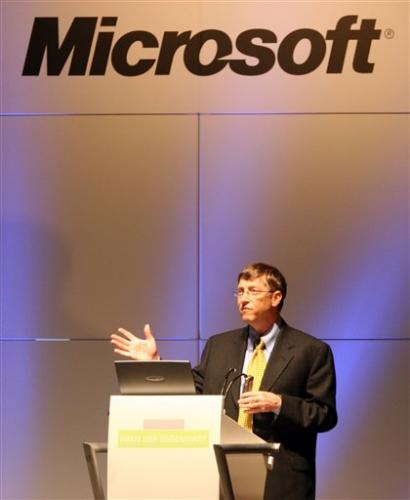

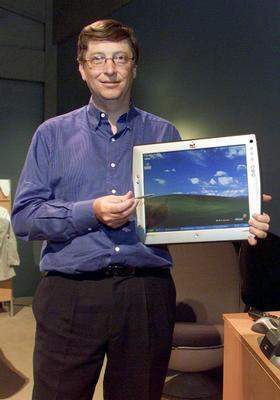

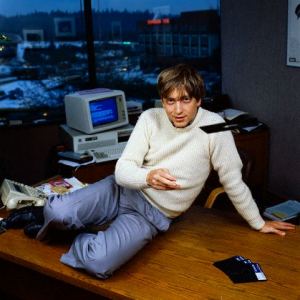
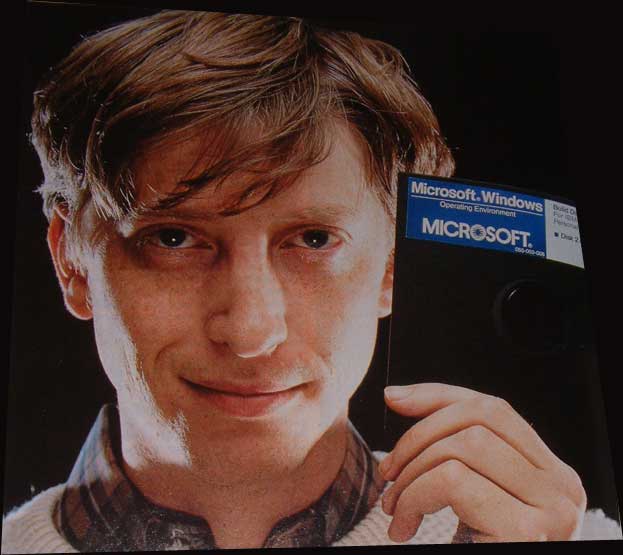
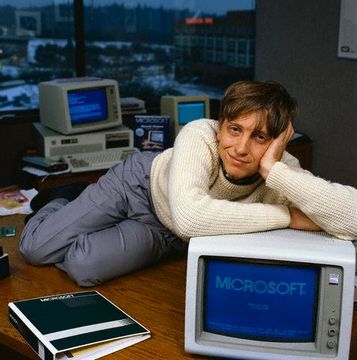

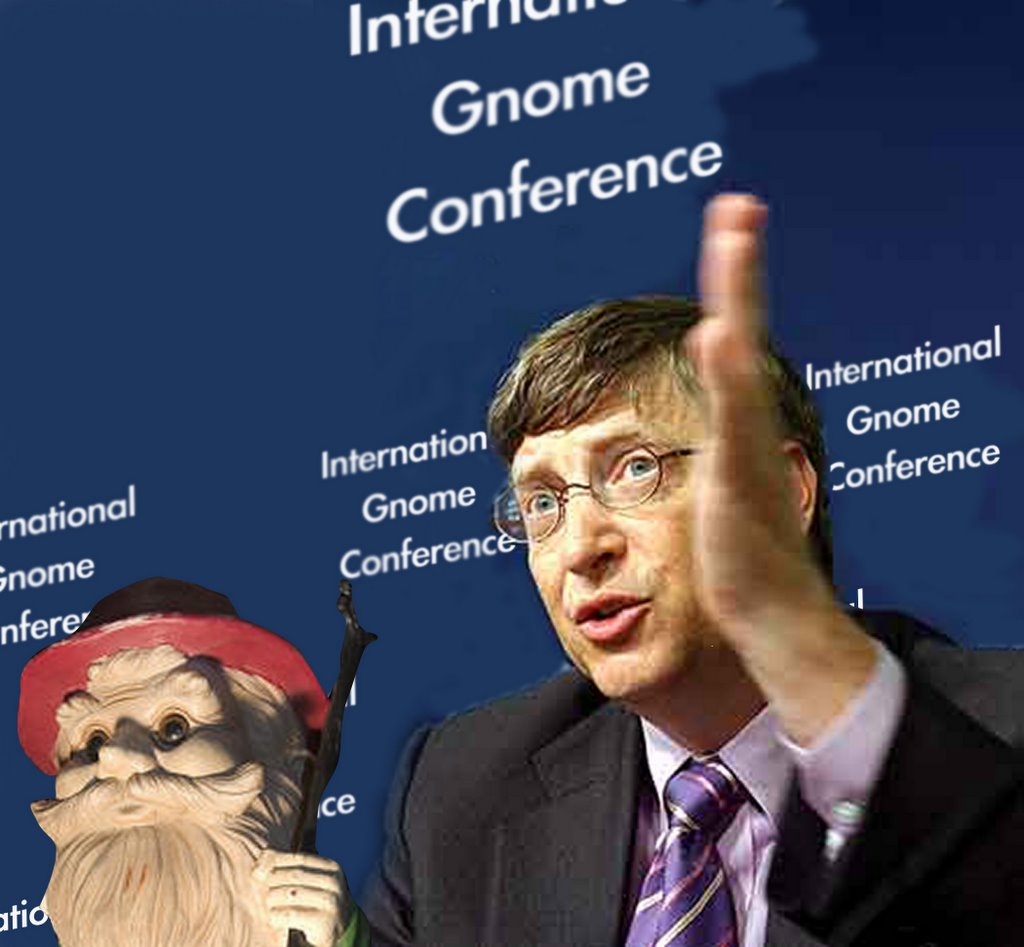



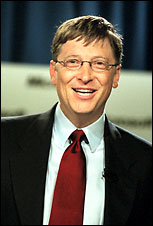
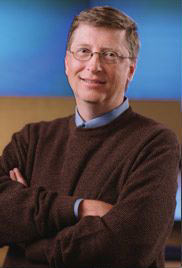
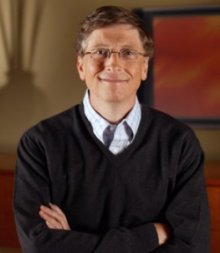

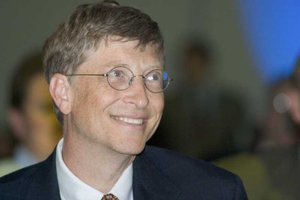


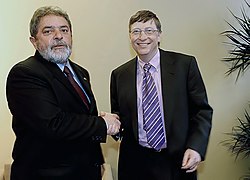
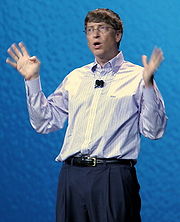
没有评论:
发表评论